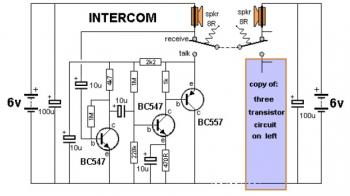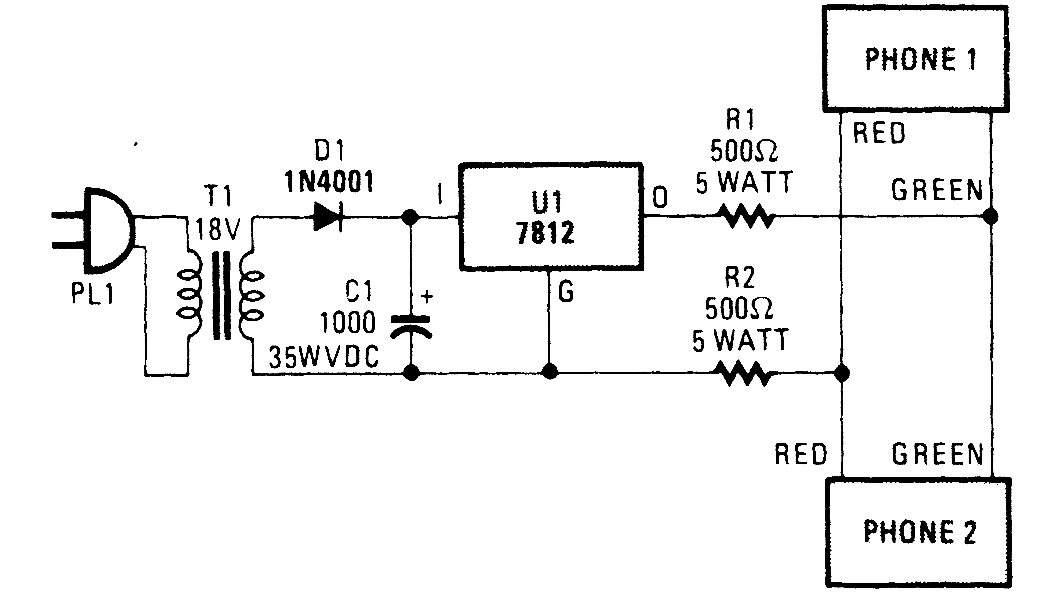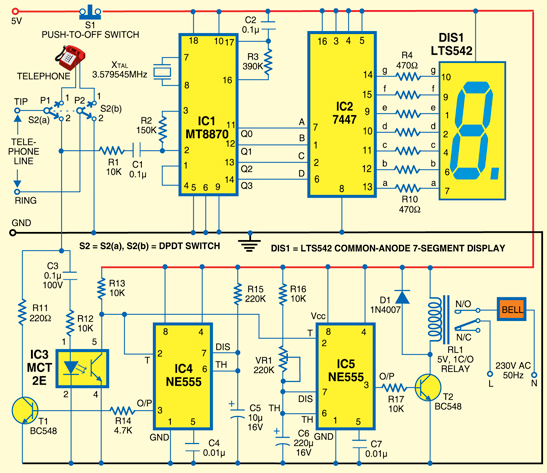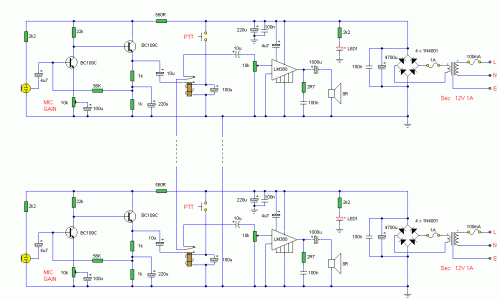
intercom
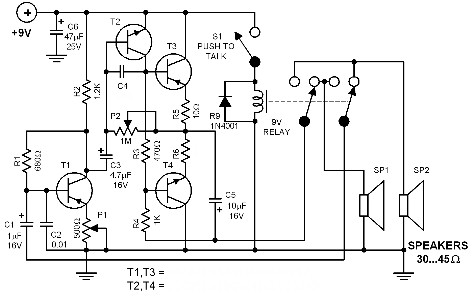
This intercom utilizes a standard speaker to operate as its microphone. When the button is pressed, the relay switches, allowing the speakers to exchange their roles. One speaker functions as a regular speaker while the other serves as the microphone.
The intercom circuit is designed to facilitate two-way communication using standard audio components. The primary components include two speakers, a relay, a push-button switch, and a power supply.
In operation, the system begins with both speakers connected to the audio input. When the user presses the button, the relay is activated, which changes the connections of the speakers. This action allows one speaker to receive audio signals from the incoming communication while the other speaker captures sound from the user, effectively turning it into a microphone.
The relay used in this circuit is typically a double-pole double-throw (DPDT) type, which enables the simultaneous switching of both speaker connections. The power supply should provide adequate voltage and current to operate both the relay and the speakers without distortion or loss of audio quality.
To ensure optimal performance, it is essential to select speakers with compatible impedance ratings and a relay that can handle the audio signal levels without introducing noise. Additionally, proper wiring and grounding techniques should be employed to minimize interference and enhance audio clarity.
In summary, this intercom system represents a practical application of basic electronic components, allowing for effective communication through the innovative use of speaker functionality.This intercom uses an ordinary speaker to function as its microphone. Once the button is pressed, the relay toggles, and the speakers interchange their functions. One works as a normal speaker and the other one works as microphone. 🔗 External reference
The intercom circuit is designed to facilitate two-way communication using standard audio components. The primary components include two speakers, a relay, a push-button switch, and a power supply.
In operation, the system begins with both speakers connected to the audio input. When the user presses the button, the relay is activated, which changes the connections of the speakers. This action allows one speaker to receive audio signals from the incoming communication while the other speaker captures sound from the user, effectively turning it into a microphone.
The relay used in this circuit is typically a double-pole double-throw (DPDT) type, which enables the simultaneous switching of both speaker connections. The power supply should provide adequate voltage and current to operate both the relay and the speakers without distortion or loss of audio quality.
To ensure optimal performance, it is essential to select speakers with compatible impedance ratings and a relay that can handle the audio signal levels without introducing noise. Additionally, proper wiring and grounding techniques should be employed to minimize interference and enhance audio clarity.
In summary, this intercom system represents a practical application of basic electronic components, allowing for effective communication through the innovative use of speaker functionality.This intercom uses an ordinary speaker to function as its microphone. Once the button is pressed, the relay toggles, and the speakers interchange their functions. One works as a normal speaker and the other one works as microphone. 🔗 External reference
